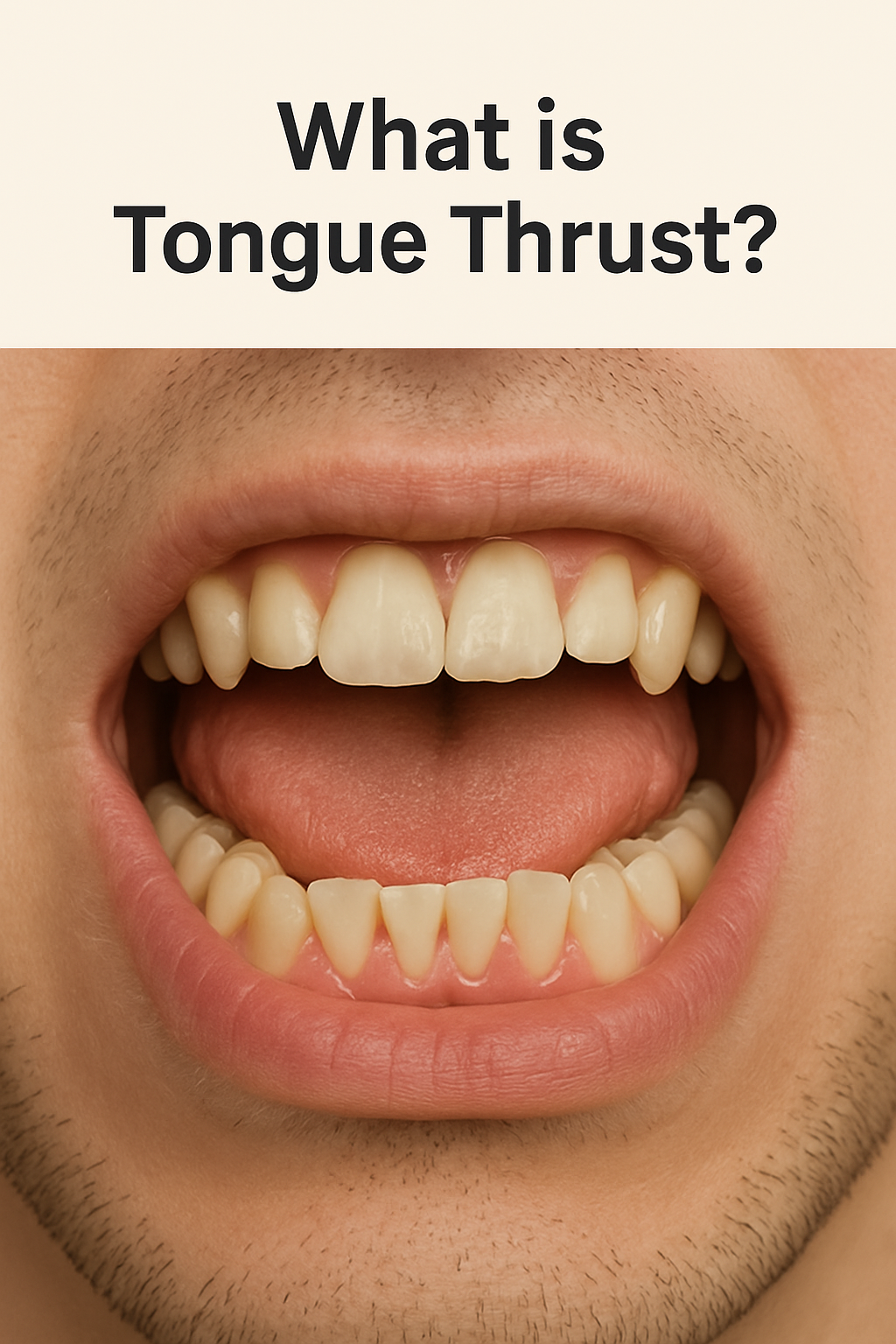Tongue Thrust & Orofacial Myofunctional Disorders: What You Need to Know
If you’ve noticed your child’s tongue pushing against their teeth when they swallow, breathe, speak, or even rest, you might be seeing signs of tongue thrust. Left untreated, this habit can lead to crooked teeth, jaw problems, breathing issues, and speech sound errors. As a trained Orofacial Myofunctional Therapist, I help patients retrain how their tongue and oral muscles work—so they can swallow, speak, and breathe more efficiently.
Let’s break it down into the essentials.
Tongue thrust often looks like crooked/crowded teeth, high/narrow palate, mouth breathing, speech errors and sleeping problems.
What is Tongue Thrust and Orofacial Myofunctional Disorders (OMD)?
Tongue thrust happens when the tongue pushes forward against or between the teeth during swallowing, speaking, or at rest. While this might seem like a small thing, it can have big effects on dental and overall health.
Orofacial Myofunctional Disorders (OMDs) are a broader group of conditions where the muscles of the face, tongue, and mouth don’t work together in the way they should. These patterns can develop due to:
Extended thumb sucking or pacifier use
Mouth breathing from allergies or nasal congestion
Tongue tie or other structural differences
Long-standing habits from early childhood
Why It Matters: Long-Term Effects on Teeth, Jaw, and Breathing
When the tongue is not in the right position, it can put constant pressure on teeth and jaws—just enough to shift them over time. Some potential long-term effects include:
Crooked teeth and bite problems (malocclusion)
Orthodontic relapse—braces results that don’t last
TMJ pain from unbalanced jaw movement
Speech difficulties, especially lisps and unclear sounds
Airway and breathing problems, such as snoring, open-mouth posture, or increased risk of sleep-disordered breathing
Correcting the tongue’s position early can help prevent these issues—or stop them from getting worse.
How Orofacial Myofunctional Therapy Helps
Orofacial Myofunctional Therapy (OMT) is like physical therapy for your tongue and facial muscles. The goal is to restore:
Proper tongue rest posture (tongue up on the palate, lips closed, breathing through the nose)
Efficient swallowing patterns that don’t push against the teeth
Balanced muscle function between the tongue, cheeks, and lips
Therapy is customized for each patient and often works in partnership with orthodontists, dentists, ENTs, and speech-language pathologists to get the best, lasting results.
Precursory signs of an OMD in children include prolonged thumb/digit sucking, open mouth breathing, chewing/swallowing with the mouth open, and overall weak lip, tongue and cheek muscle strength.
What to Expect in Therapy
Here’s what the process looks like in my clinic:
Evaluation – We assess how you swallow, where your tongue rests, and how you breathe.
Research-based exercises – Follow a 10-lesson protocol targeting habituation of correct swallowing, to be done at home 3x daily. Some lessons may be adjusted based on your individual needs.
Monthly follow ups – We meet 30, 60 and 90 days after the program is completed to check swallowing has been habituated, and review specific exercises as needed.
Lasting results – With consistent practice, new patterns become automatic, leading to healthier teeth, jaws, and breathing. Referrals to ENTs, Orthodontists, Dentists or Craniofacial therapists may be given to ensure holistic care.
Many patients start to see improvements in just a few weeks, with full correction taking several months depending on age and habits.
If you think you or your child may have tongue thrust or another OMD, early evaluation is key. Contact us at 385-246-2684 or infor@coppermountainspeech.com to schedule a consultation and learn how therapy can help prevent dental, jaw, and breathing problems for years to come.


